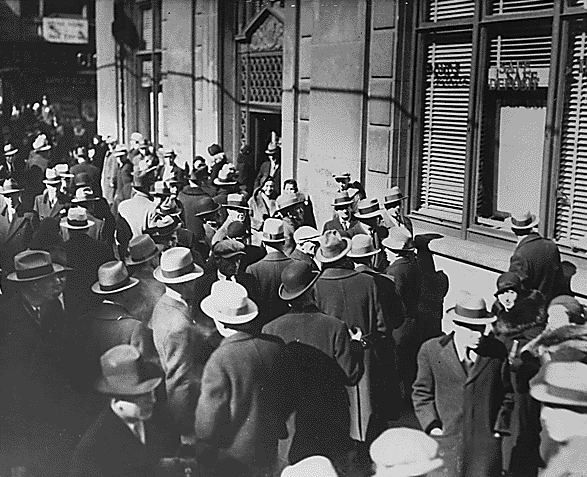It Pays To Be Ignorant
Dolors & Sense
by Sanford Rose
KISSIMMEE Florida—(Weekly Hubris)—8/29/11—Banks go bankrupt in hard times. That’s because, however well-capitalized they appear to be, banks remain dependent on other people’s money.
The amount of the true shareholder’s stake in a bank rarely exceeds 3 to 4 per cent of the value of assets.
So when asset values decline by just a little, bank assets usually end up being worth less than bank liabilities. (The latter, being mainly deposits, are not as prone to valuation adjustments as are the assets.)
So the bank is bust. In a valuation sense.
But it is not necessarily bust in a cash-flow sense, at least for the time being. That is, incoming cash usually exceeds outgoing cash.
The decline in asset values merely means that the market expects an “eventual” shortfall in incoming cash. Allegedly, when times normalize, the temporarily impaired assets will “cure,” which means that in the future they will produce the cash inflows promised at the time they were put on the bank’s balance sheet.
The banks have been bust many times during the past 40 years. During the late 70s, early 80s, mid 80s, and early 90s, many of the biggest were bankrupt in a valuation sense.

There is one key difference, however, between the past and the period that began in 2007-2008.
In the past, we didn’t tell anyone that the banks were bust—that is, the number of the informed public was small.
In the more recent period, with the growth of market-value accounting (forcing banks to publish in separate accounts the amount of allegedly temporary asset impairment) and the rise in the credit-default swap market (where the public calibrates the likelihood of bank default on a daily basis), the news about insolvency is widely and relatively rapidly disseminated.
Too widely. Too rapidly.
Knowing the truth doesn’t necessarily make you free.
If knowledge induces panic—if it causes excess worry about the ability of a bank to cure those impaired assets—then it can lead to a self-fulfilling round of asset liquidations that serves only to deepen the valuation hole.
That’s the position in which we found ourselves in 2008. It led us into a deep recession.
That’s the position in which we are about to find ourselves in 2011.
It is not true that a little knowledge is a dangerous thing.
Sometimes, a lot can be far more dangerous.